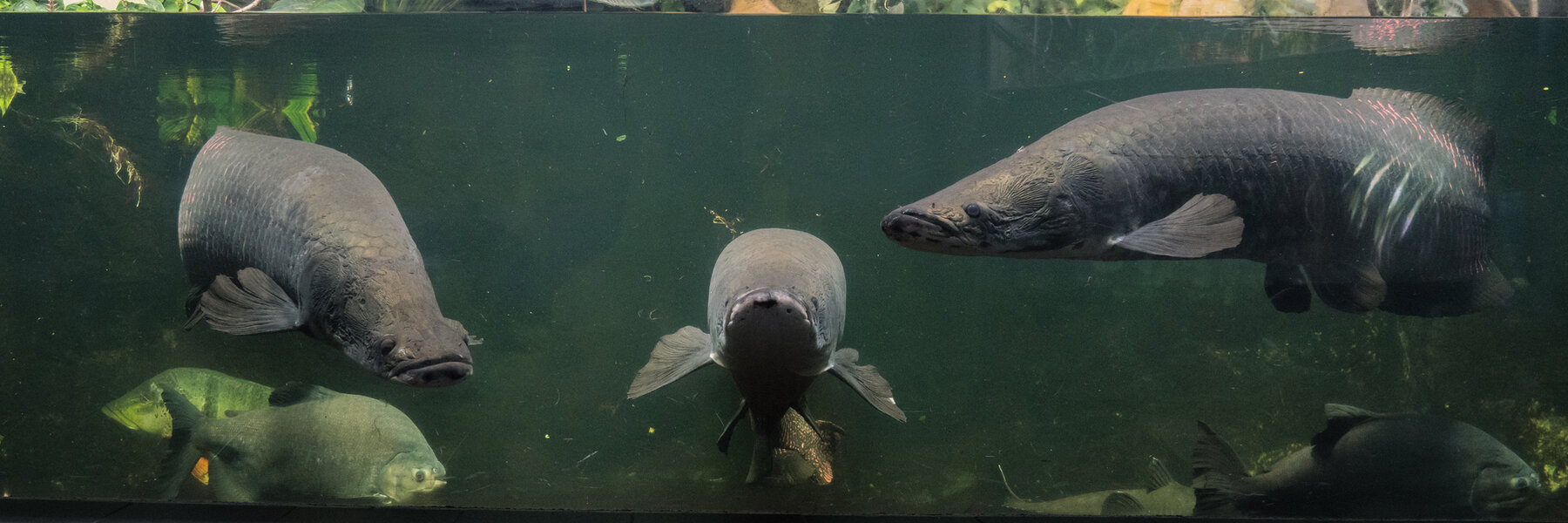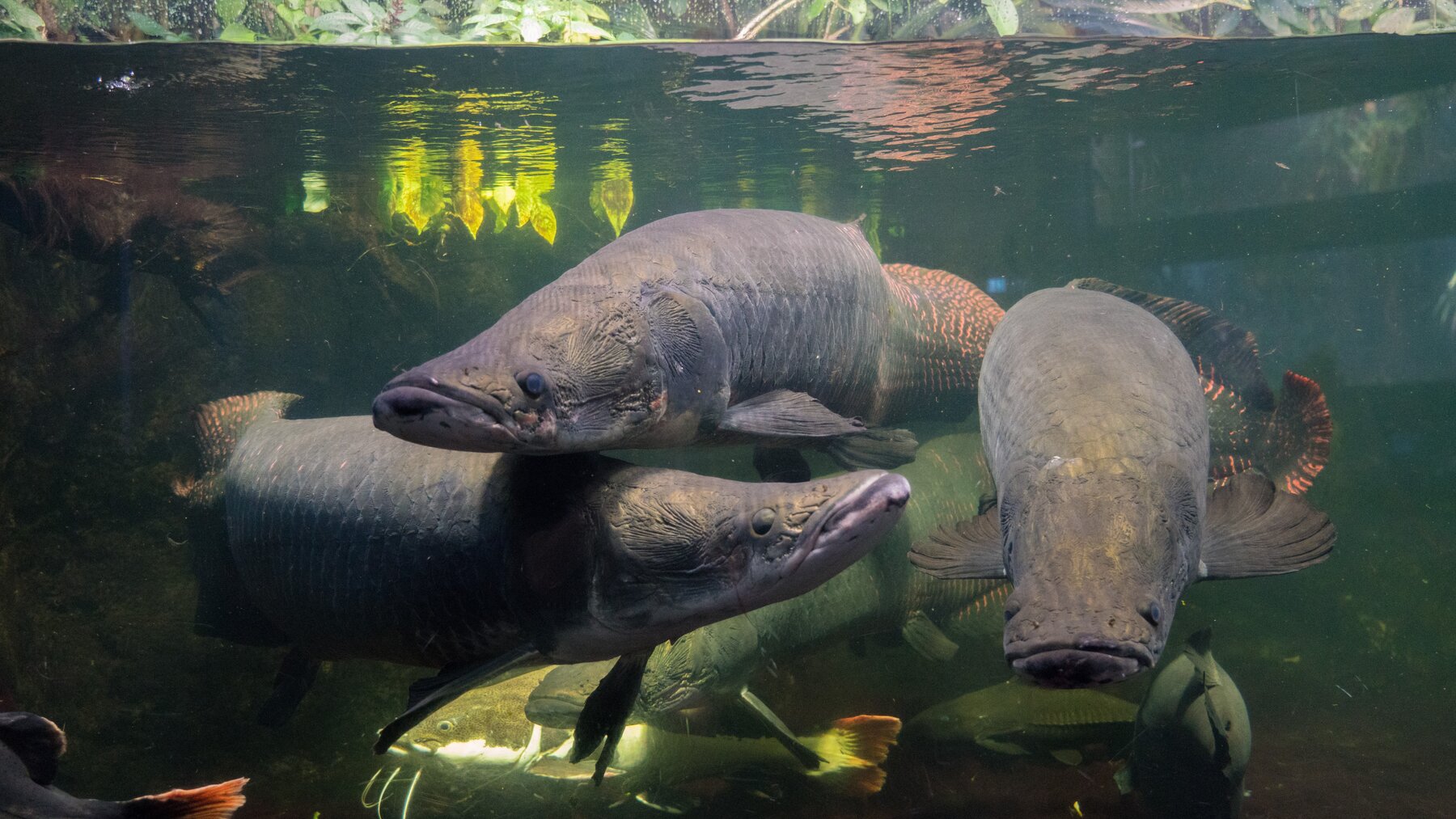
Arapaimas
Arapaima gigas
Endangered giant in the Amazon
Due to the high fat content, there is a great demand for Arapaima meat that is sold on the market salted and dried. The excessive exploitation has already led to local extinction in many areas, particularly in the main river of the Amazon. But even the extensive destruction of the tropical rain forest and the consequent presence of pesticides and pollutants such as mercury or oil, which are flushed into the waters, threaten the habitat of the giant fish.
Characteristics
- Origin
Northern South America, in the Amazon and its lower reaches among other places
- Habitat
In flat areas, in waters that are densely overgrown with aquatic and waterside plants and periodically flooded areas.
- Diet
Fish, frogs, birds, small mammals
- Status
least concern
- Size
above 2 m
- Weight
above 100 kg
- Breeding period
Several months of brooding care. Parents guide juveniles up to a size of 25 cm.
- Achievable age
up to 20 years
Threat Categories of IUCN


What you should know about Arapaimas
Arapaimas live in the waters of Brazil, Guyana and Peru that are densely overgrown with aquatic and waterside plants, this predominantly concerns the Amazon and Orinoco rivers and their tributaries. They do, however, avoid the strongly acidic, so-called black waters that are low in fish and fast-flowing waters.
Practical scale armour
The Arapaima has a strong scaly body, which provides it with protection against, for example, piranha bites. The secret of the Arapaima armour: it's hard enough to prevent penetration by teeth and flexible enough to withstand the pressure of a bite without it breaking or tearing.
Is it true, that ...?
... an arapaima can also breathe 'normal' air? Yes, the arapaimas are able to gasp for air as a particular adaptation characteristic to the extreme habitats in South America. If, for example, the oxygen content decreases in the water, then the arapaimas rise to the surface and breathe using their lung-like air sacs – but this does not make them lungfish!

